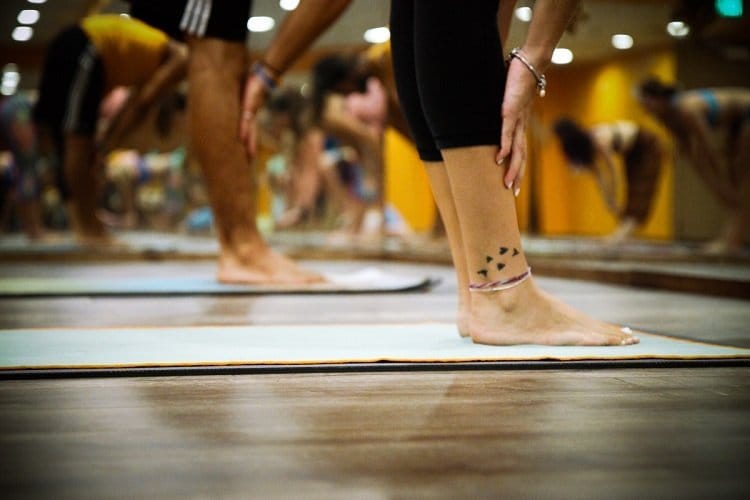Undergoing surgery is never a particularly pleasant experience. But, it can be even more frustrating when your surgery literally knocks you off your feet for a few weeks or months.
If you’ve got an ankle surgery coming up, you might be wondering how you expedite your recovery and minimize the amount of time you have to spend sitting around with our ankle propped up.
While some downtime will be required no matter what, there are some steps you can take to reduce your recovery time and ensure your ankle heals properly after surgery.
Listed below are seven great tips that will help you bounce back quickly after you undergo ankle surgery.
Set Yourself Up for Success Before Surgery

A successful recovery starts way before the day of your surgery. In the weeks leading up to the operation, do everything you can to make life easy for yourself during the recovery process.
Some specific steps you can take to make your recovery go more smoothly include:
-
Rent or purchase and practice using your mobility devices: A pair of crutches or a knee walker scooter facilitates recovery from surgery, but you should get comfortable using them before going under the knife. That way, you won’t have to deal with the learning curve while also experiencing pain from your surgery.
-
Recruit friends and family to help with daily tasks: Talk to people in your life before the surgery and schedule times for them to come and help you take care of chores like cleaning, preparing food, walking your dog, and picking your children up and dropping them off at appointments.
-
Get a temporary handicapped parking tag: If you’ll need to drive yourself somewhere during the recovery period, a temporary handicapped parking tag will keep you from having to travel far from your car to your destination.
-
Talk to your employer: It typically takes at least eight weeks for patients to be cleared to return to work after an ankle surgery. Talk to your boss and make arrangements for temporary disability leave.
Sleep as Much as You Can

One of the most important things to do after undergoing ankle surgery is to make sure you get plenty of sleep. This can be hard to do, especially if you’re an active person who’s used to constantly being on the go.
Rest is essential after surgery, though. When you sleep, your body releases hormones that promote healing and muscle growth.
You’ll also reduce the amount of strain you put on your ankle if you spend plenty of time lying down or sitting with your ankle elevated. This, in turn, can expedite the recovery process and allow you to get back on your feet sooner.
Eat a Healthy Diet
It’s also important to focus on nutrition while you’re recovering.
Your body needs energy in order to heal from your surgery, so you need to make sure you’re consuming plenty of calories. But, it’s also important to make sure you’re eating calories that come from high-quality, nutrient-dense foods.
Make sure you’re eating plenty of protein, as well as calcium and vitamin D. Protein is necessary for muscle repair and growth, and calcium and vitamin D promote healthy bones and muscle contractions, as well as proper immune system function.
Drinking plenty of water is also important, as your body needs to be properly hydrated in order to function well and carry out the recovery processes needed to heal your injury.
Make the Most of Your Down Time
It’s easy to start feeling restless when you’re forced to sit or lie down while your ankle heals. If you’re having a hard time resisting the urge to get up and move, try to find some different ways to be productive.

Have you been wanting to learn to play an instrument or learn a new language? Or, do you have a stack of books you’ve been meaning to read? Now might be the time to take up a new hobby or do something you’ve been putting off.
These kinds of activities will entertain you and help you feel accomplished while also giving your ankle time to heal.
Use Ice and Compression
Applying ice to your ankle will help dull any pain you’re experiencing. It will also reduce inflammation and swelling so that your ankle can heal faster.
You’ll likely see better results from your cold therapy treatments if you combine them with compression. Compression will help send fresh, nutrient- and oxygen-rich blood to your ankle to promote faster healing.
For the added benefits of compression, you can simply use an ace bandage to wrap an ice pack tightly to your ankle. Or, you can use a cold therapy machine that circulates cold water at a consistent temperature around your ankle while also applying compression.
Do Rehabilitation Exercises Regularly
Finally, be sure to consistently do the exercises that your physical therapist recommends.

The exercises might seem simple — in fact, they’re usually similar to exercises designed to help seniors improve their mobility. But, just because they don’t cause you to break a sweat, that doesn’t mean they’re not effective.
Exercises like ankle flexion and extension, ankle rolls, and walking are also essential to restoring mobility and ensuring your ankle is strong and resilient to future injuries.
Take these exercises seriously and do them consistently so you can heal and get back to your favorite activities sooner.

